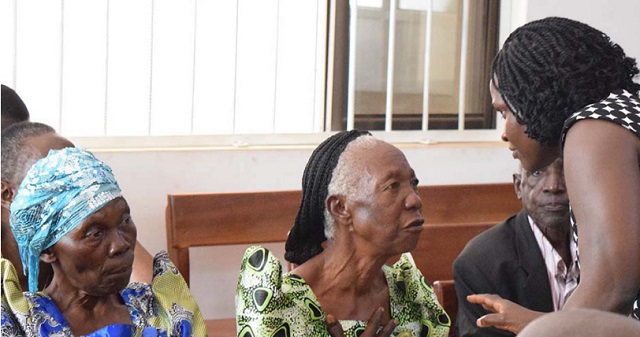
Uganda has to develop and implement long-term vision for a national social protection system
| THE INDEPENDENT | Spending on social protection interventions, such as the Senior Citizens Grant, is not a welfare cost, but is in fact an investment to the economy that demonstrates remarkable macro-economic impacts comparable to investment in other interventions like infrastructure, a new study conducted by the Ministry of Gender, Labour & Social Development in collaboration with the Ministry of Finance, Planning & Economic Development, shows.
The study, “Economic and Poverty Impacts of Expanding Social Protection in Uganda: Results from a SAM Modelling Approach,” was led by Dr. Bazlul Haque Khondker, a professor of economics at the University of Dhaka, Bangladesh and economic modelling expert; Dr. John Mary Matovu; and Diloá Athias; under the UK-based consulting firm Development Pathways.
The study carried out simulations to assess the impacts of the progressive expansion of the current Senior Citizens Grant to older persons over 65 years, while introducing child-focussed and disability grants over a 10 year period. Simulations of impact were conducted on household income/consumption, poverty headcount, inequality, national income and government revenue.
Stephen Kasaija, Head of the Expanding Social protection Programme Management Unit said, “These findings excite us. But it is in line with what we have all along thought about social protection interventions. Up until now, many people considered the Senior Citizens Grant under SAGE a social welfare cost, but analysis presented here using the macro-simulation tool confirms that social spending is actually an investment in the economy.”
The study shows that spending on social protection interventions such as direct income support reduces poverty and inequality, increases consumption, increases national income and expands the national revenue base for the country.
For example, the study shows that the national poverty rate could drop to 10.9 per cent by 2031, with sufficient investment in social protection. It also shows that a rise in investment in social protection from 0.11 per cent of GDP in 2022 to 1.47 per cent of GDP in 2031 would generate an additional household consumption gain of 39 per cent (current spending on the Senior Citizens Grant is only about 0.08 per cent of GDP).
The study further finds that the impacts on GDP are equally positive. If all targeted groups are covered, increased social protection spending could enhance Uganda’s GDP growth rate by an additional 1.37 per cent in 2020/31.
“Simulation outcomes suggest significant effects of social protection interventions in Uganda,” Khondker said.
Since the proposed social protection interventions would be financed through tax revenue, the study also sought to investigate the opportunity cost of direct income support to households. As an alternative option using the same level of investment, the study simulated the impact of investing 1.47 per cent of GDP in a construction activity to foster capital formation and long term growth.
The findings from the simulation suggest that spending of this scale on direct income schemes would be comparable to macro-economic impacts to a similar investment in other sectors, such as construction.
The study also shows that investments in household-level transfers have a comparative advantage for greater domestic output from agriculture, through increased value added to land and labour, and increased household consumption. This reinforces the widely acknowledged role of social protection and in particular cash transfers to beneficiary households, in supporting consumption-led growth.
“On the basis of these positive effects, more social protection interventions are justified,” Khondker said.
The study is part of a 2-year research plan to inform development of the long-term financing strategy for social protection in the country. The research demonstrates the key role of social protection as part of a wider government strategy for accelerated growth and development, thereby making the case for increased government investment in social protection. Increasingly, governments around the world are realising that social protection is a core component of any successful and sustainable market economy.
There is now strong international evidence that shows that adequate levels of investment in well-designed national social protection systems can transform societies and economies, as has happened in many high-income countries (which invest, on average, 12 per cent of GDP in social security) and growing numbers of middle-income countries.
“Uganda is not yet gaining the benefits of investing in social protection. Despite high levels of vulnerability to poverty and low productivity, current levels of social investment are minimal and, as yet, there is no national social protection scheme in place,” Khondker said.
“The main scheme is the Senior Citizens Grant but this still only reaches a small proportion of older persons.”
Khondker said if Uganda is to move forward to become a successful middle-income country, it will be critical to develop and implement a medium and long-term vision for a national social protection system.
This, he said, will imply developing a financing strategy to underpin the vision, both clarifying the level of investment and sources of finance.
****
 The Independent Uganda: You get the Truth we Pay the Price
The Independent Uganda: You get the Truth we Pay the Price


